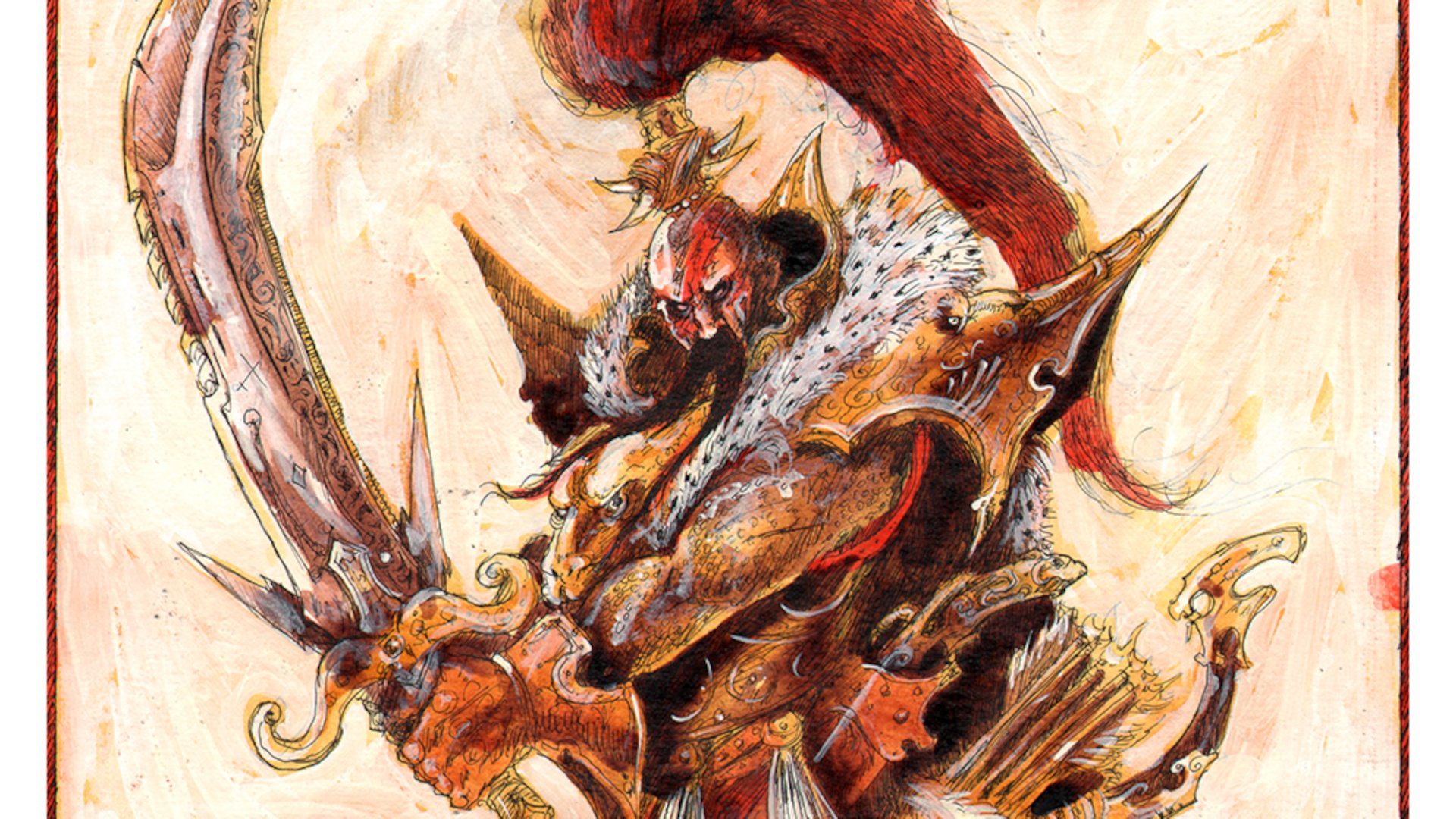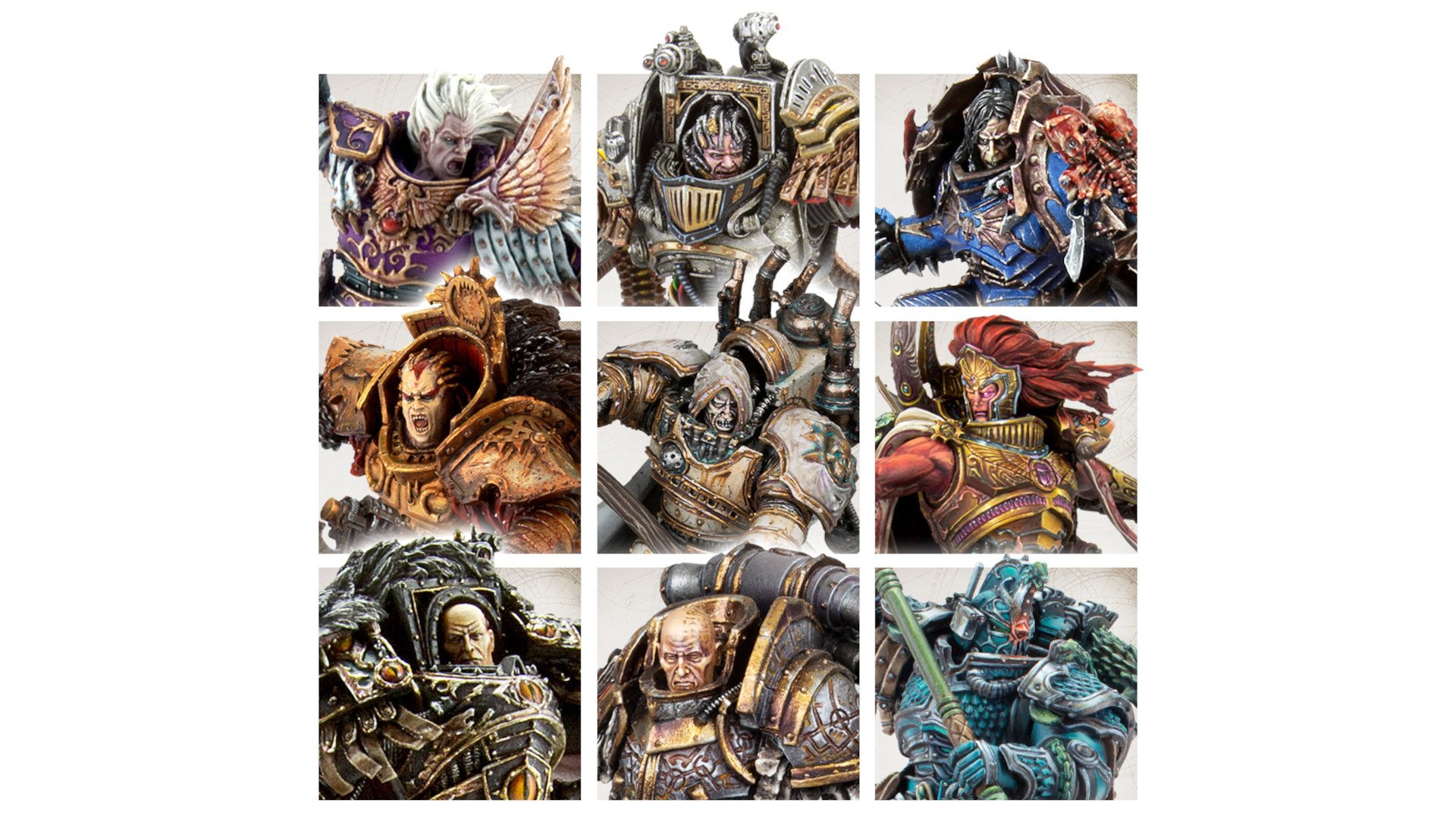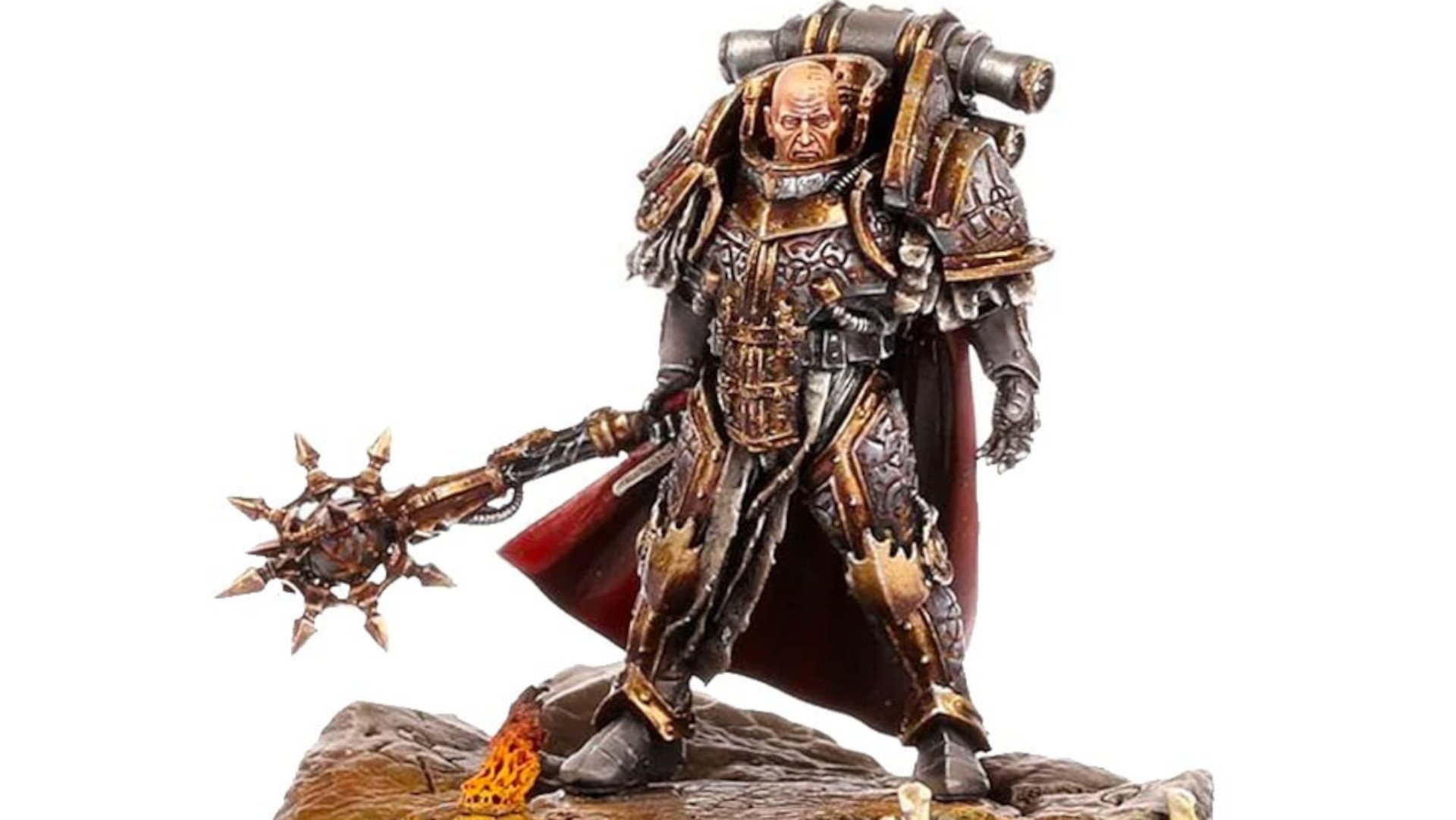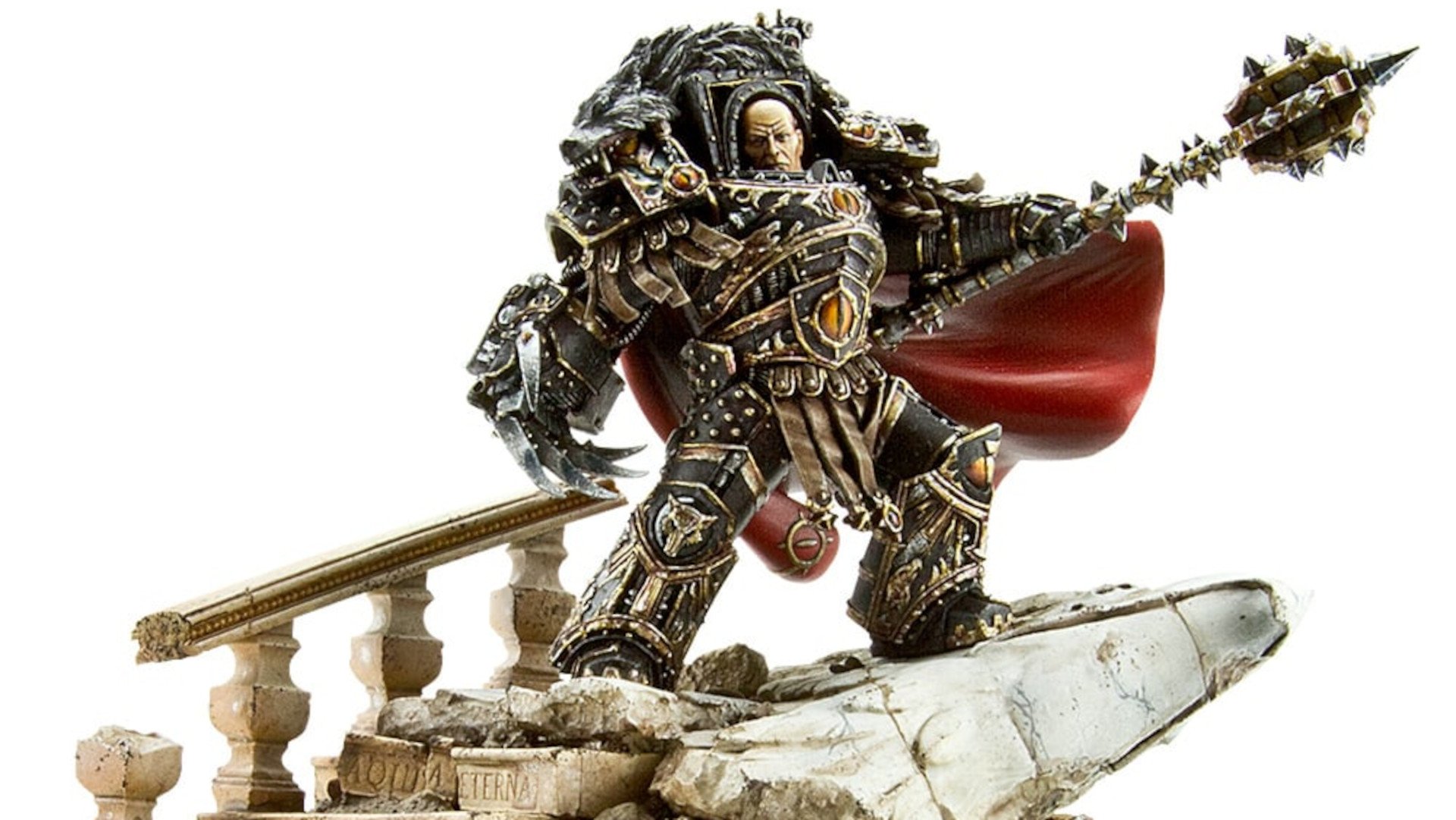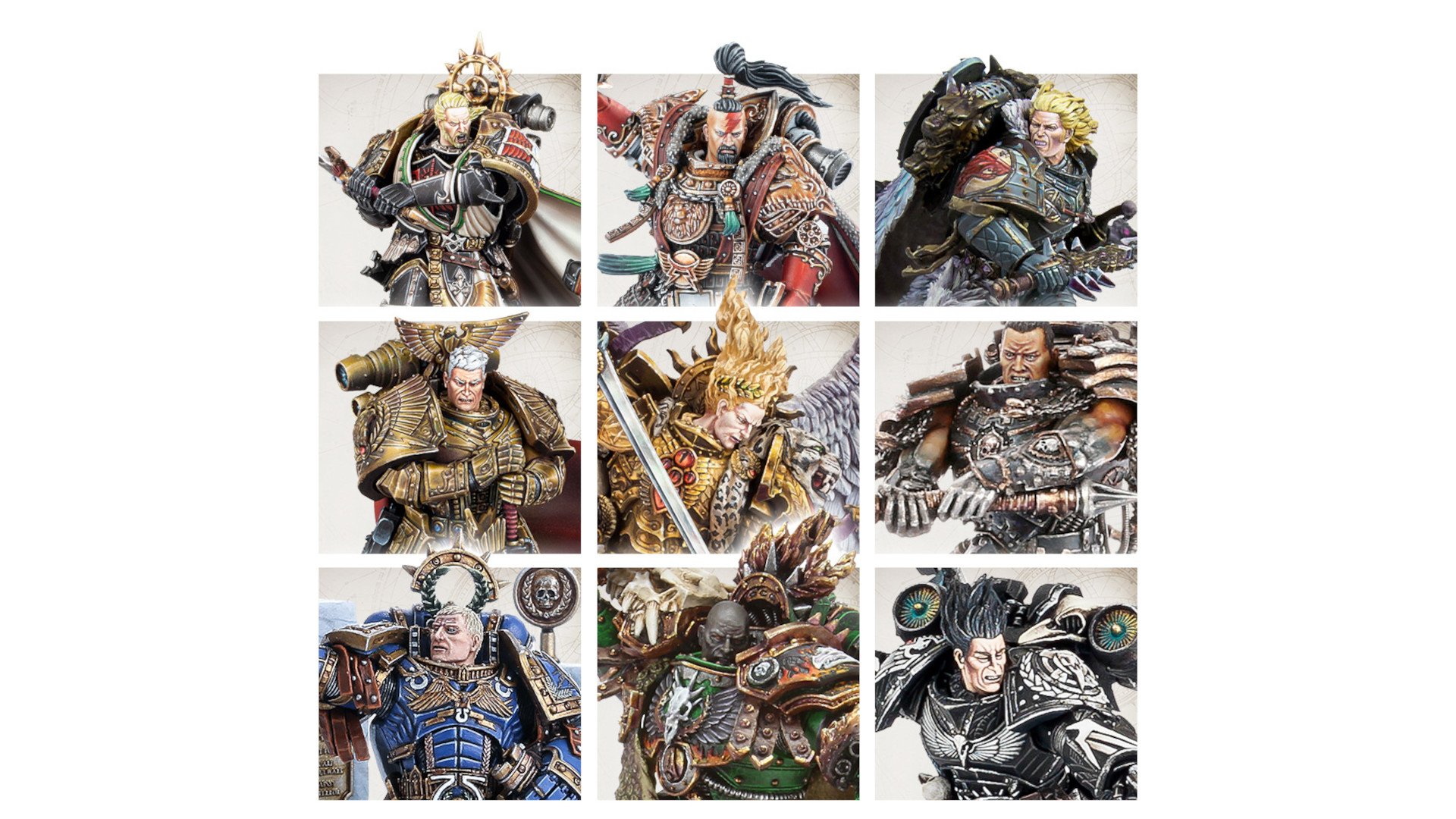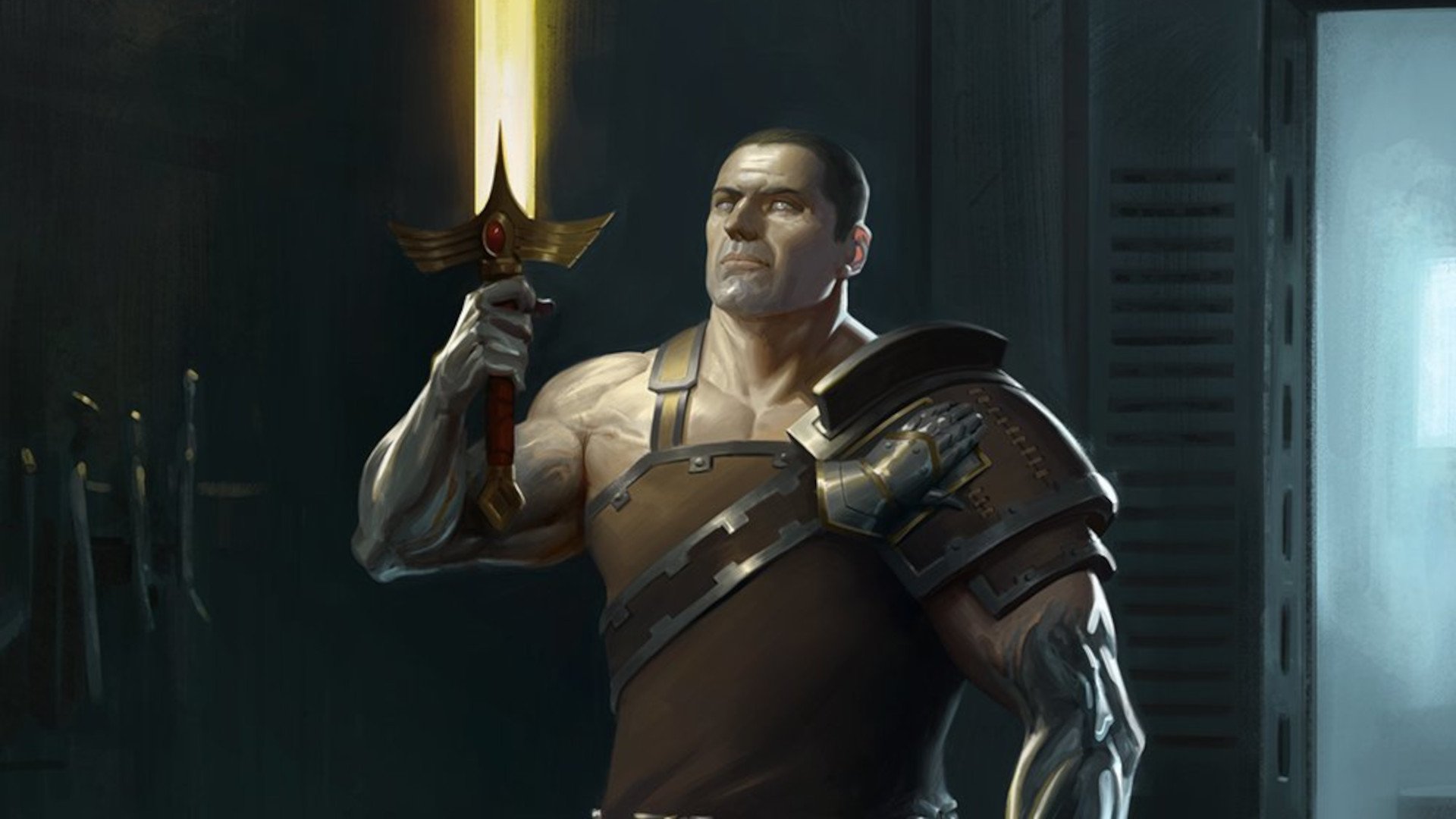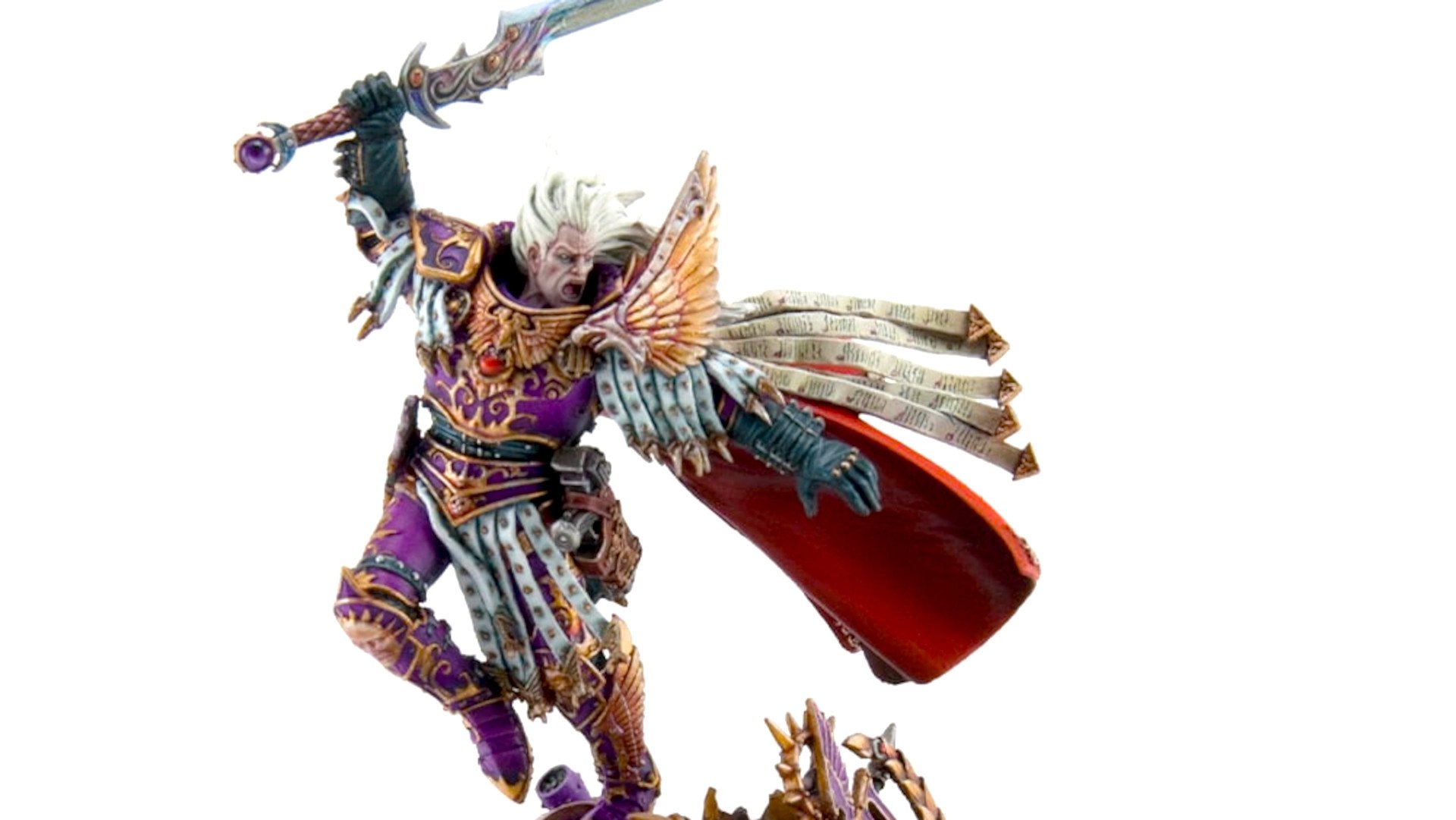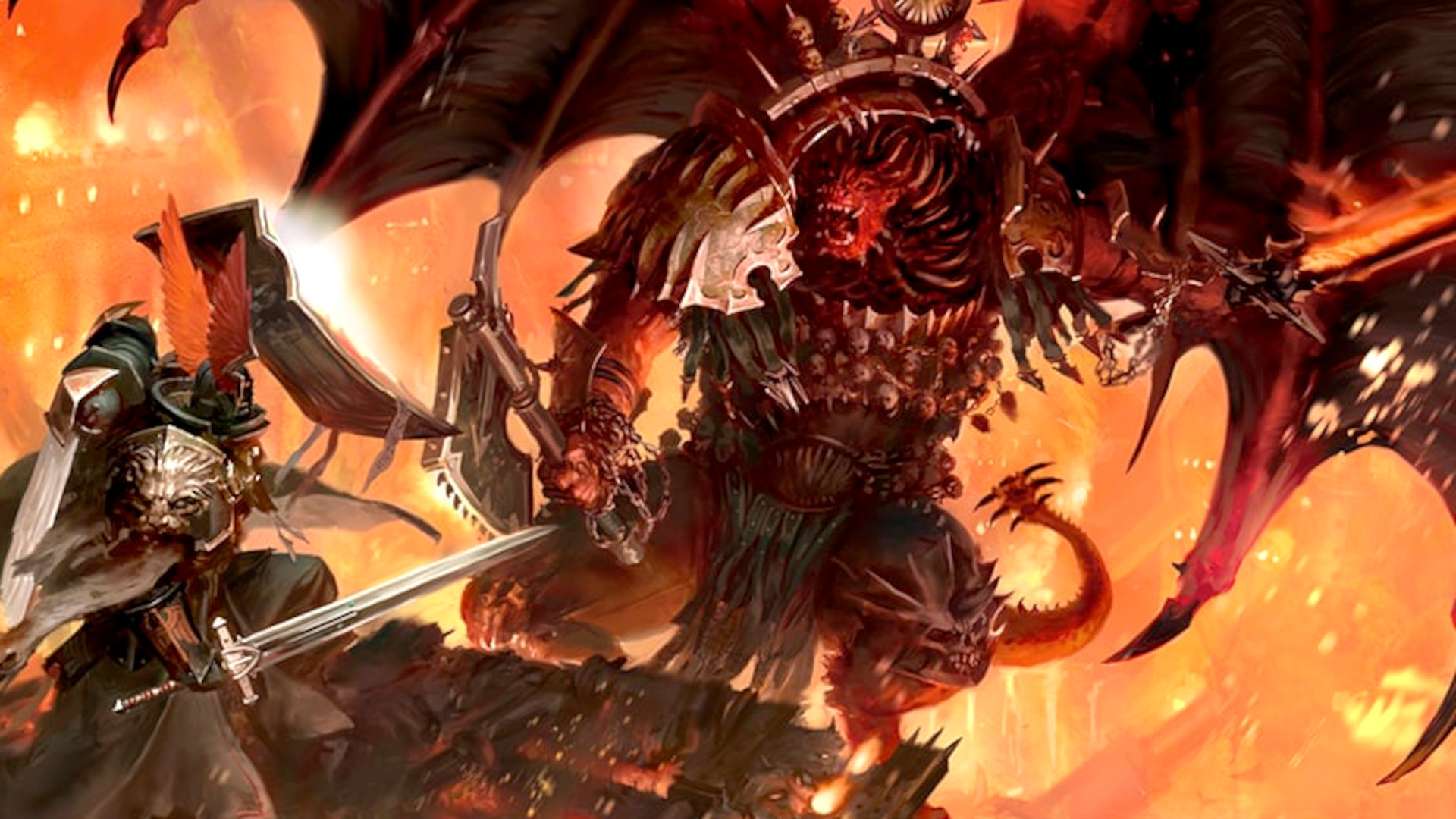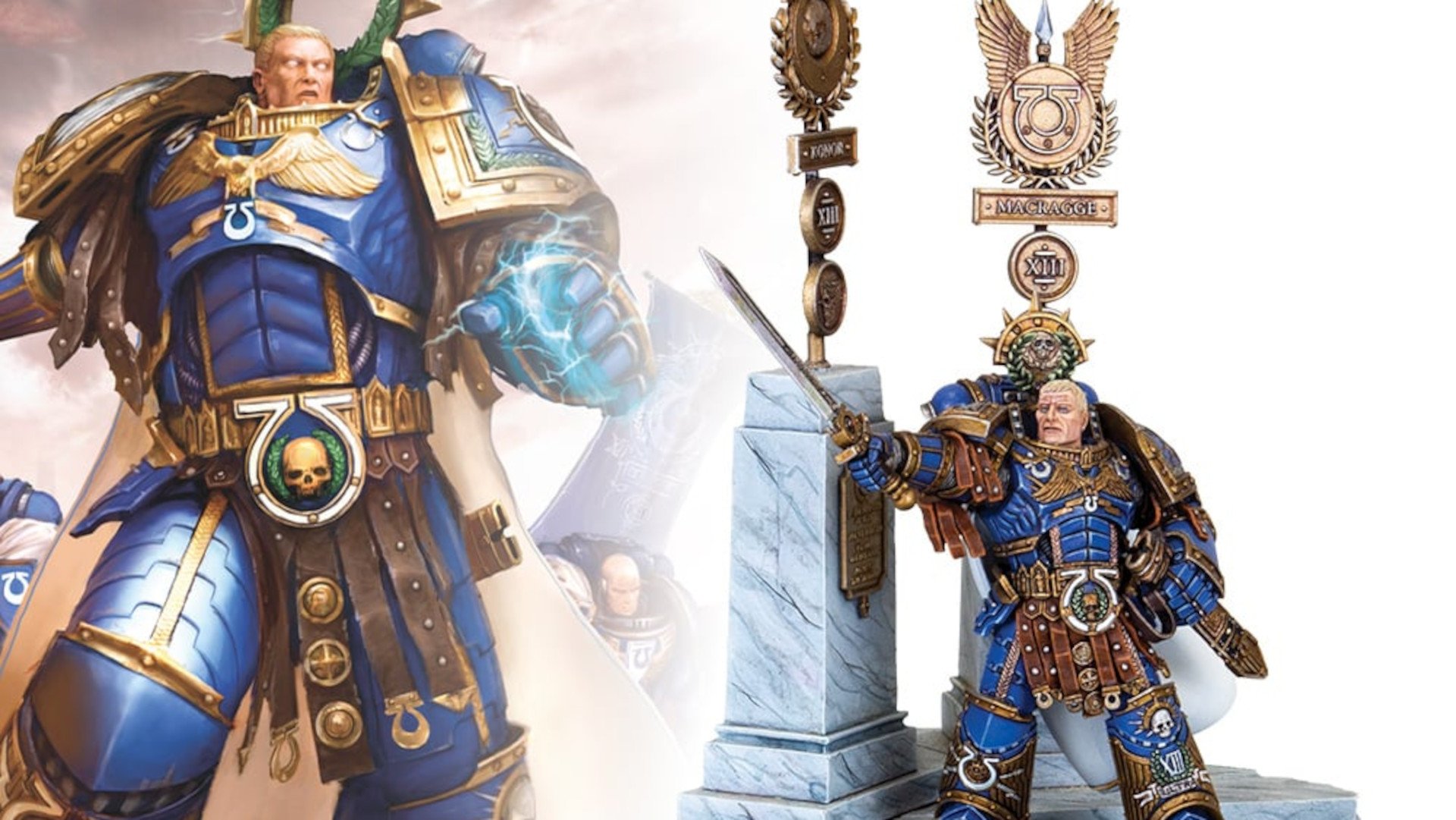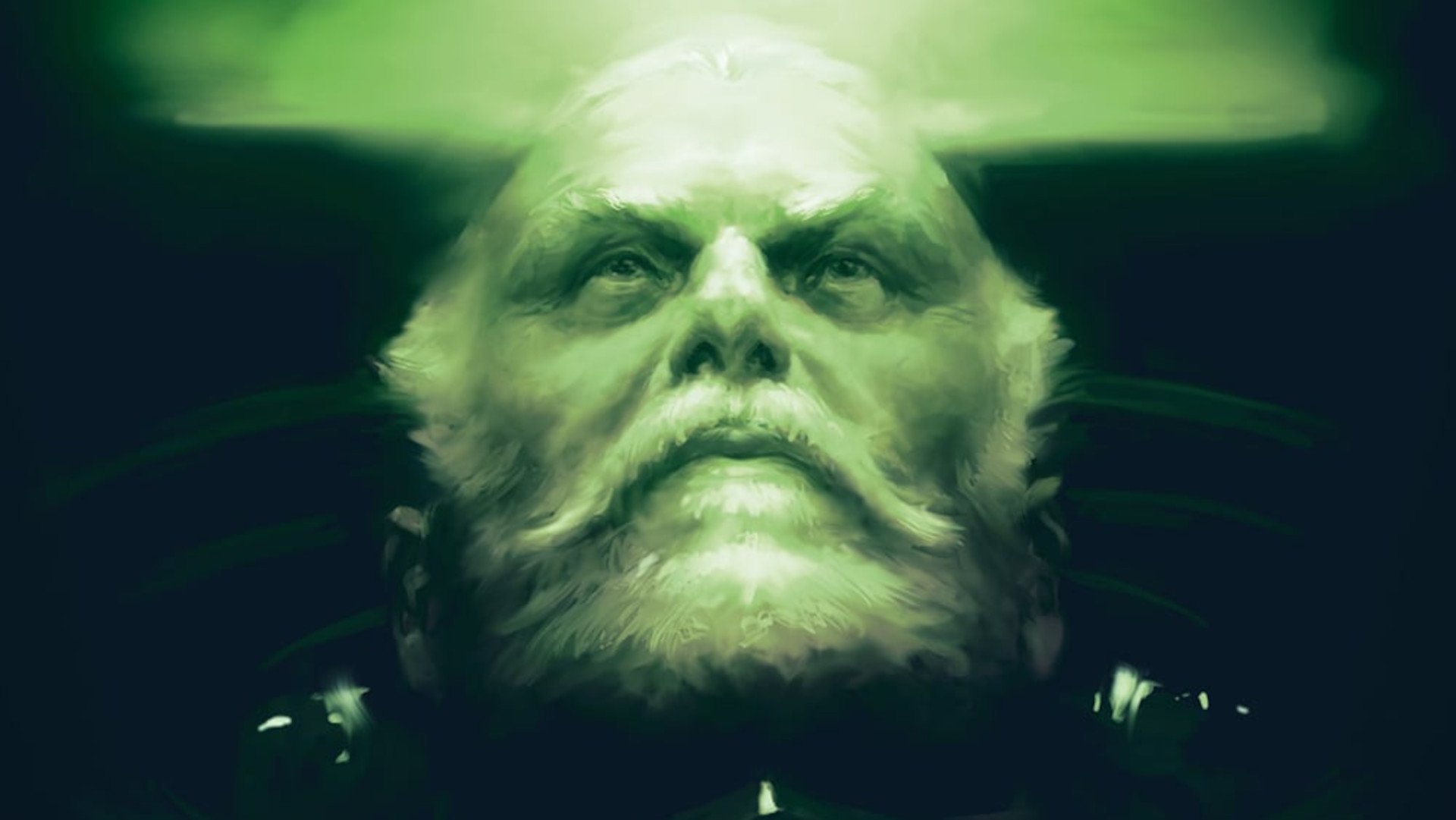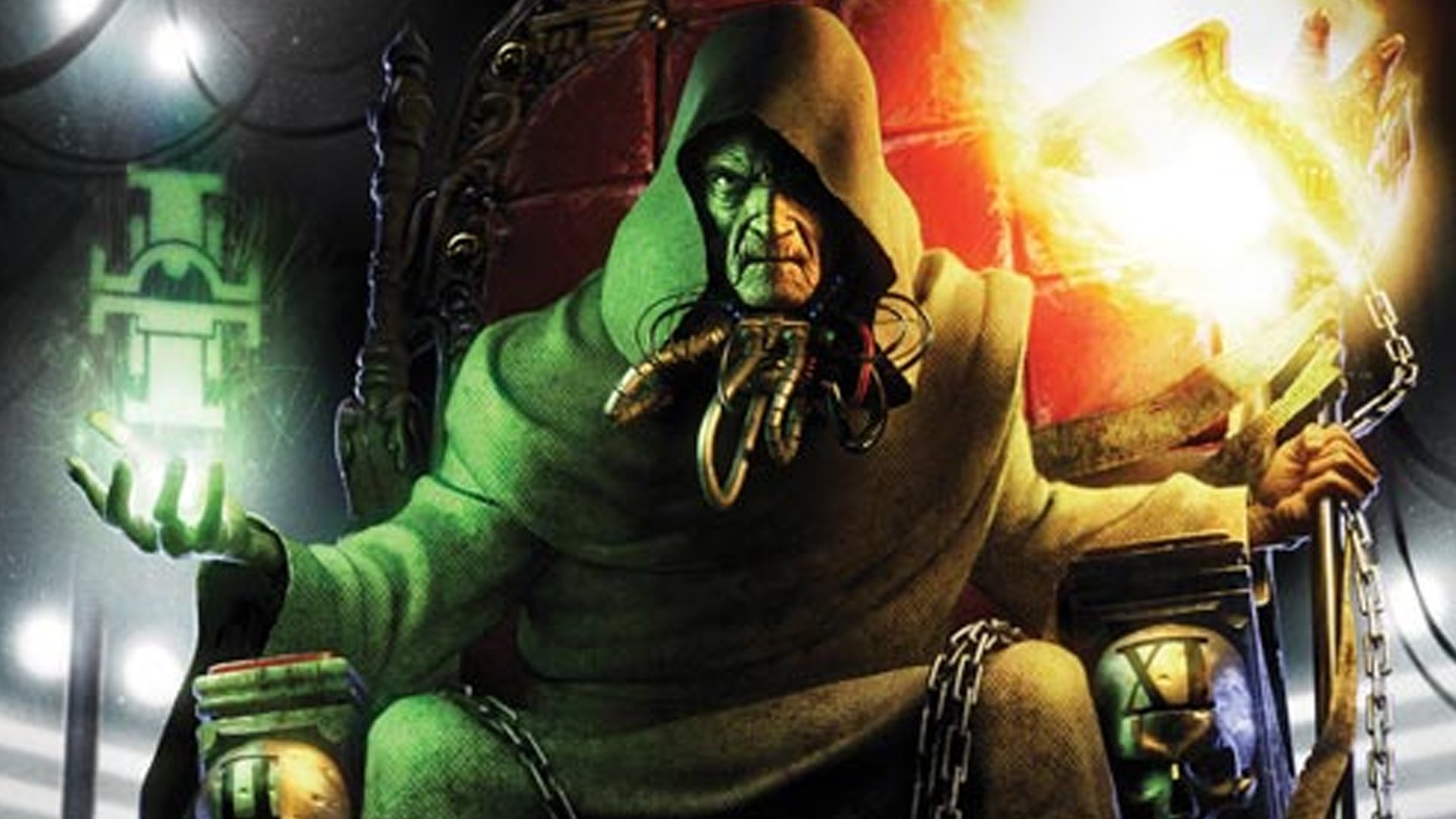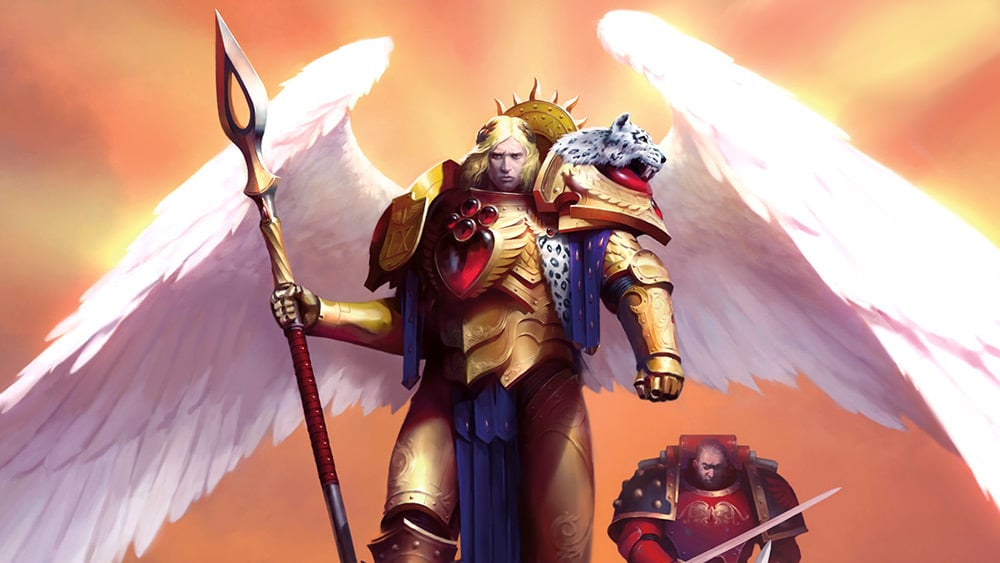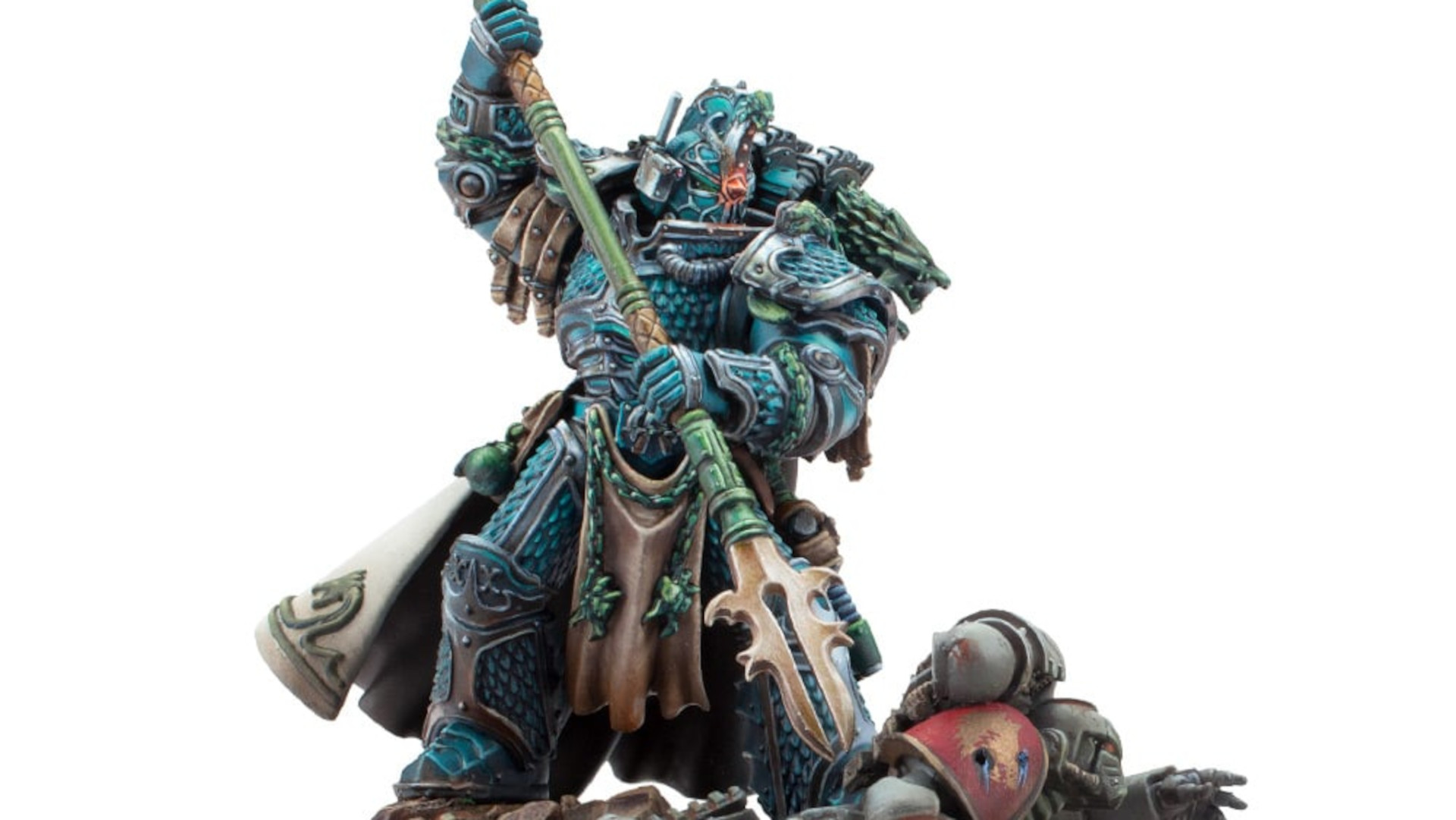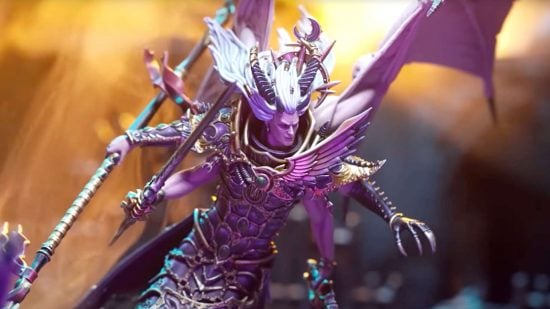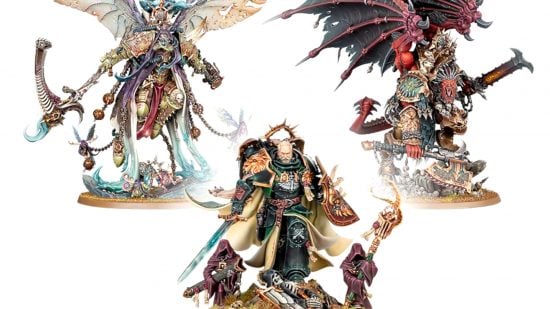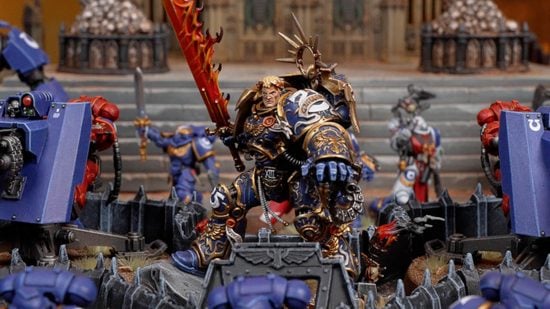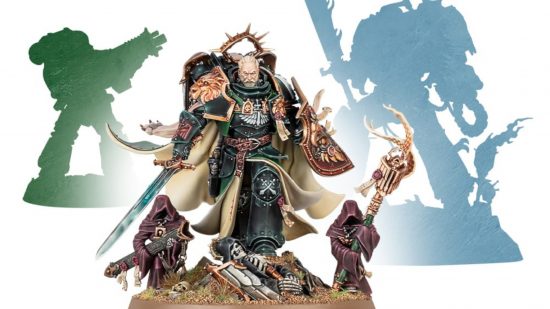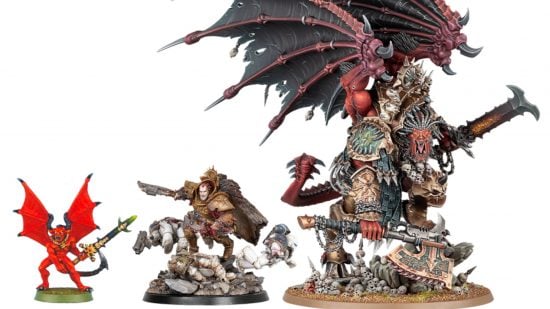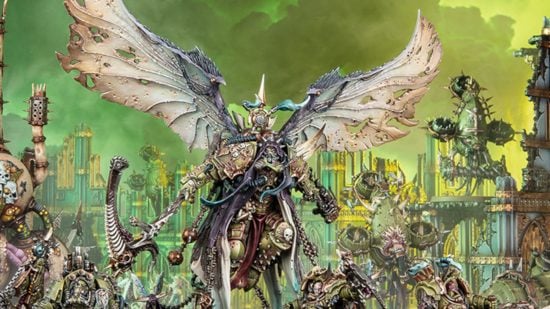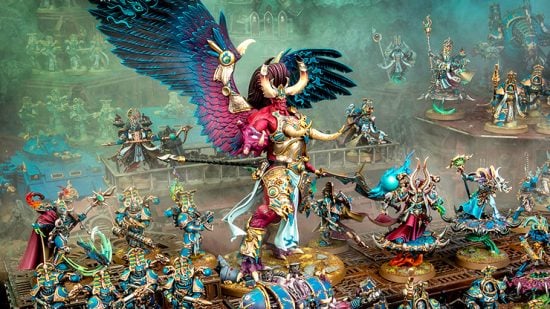The Warhammer 40k primarchs are immensely powerful Space Marine generals, created by the Emperor of Mankind in the late 30th millennium to lead his armies in the Great Crusade and reconquer the galaxy. Crafted from his own genetic material, they’re often called his ‘sons’, though many turned traitor against him in the Horus Heresy. In the 41st millennium, some are dead, many lost, and some returned to fight both for and against the Imperium – this guide has the full story.
If you’re new to Warhammer 40k lore and some of those words mean little to you, don’t worry – our guides to the Warhammer 40k factions, the Imperium of Man, its demigod leader the Emperor of Mankind, and the ever present Space Marines can ease you into Games Workshop’s sci-fi universe.
Warhammer 40k primarchs – a guide
If you know a bit about 40k but have yet to dive into its prehistory, try our beginner’s guide to the Horus Heresy, or our Horus Heresy book order to find the best things to read. For now, though, let’s meet the big boys.
Who are the Warhammer 40k primarchs?
According to sources among the Black Library Horus Heresy novel series and other Games Workshop lore texts, the Emperor originally created 20 Warhammer 40k primarchs in his secret gene-labs under the Himalaya mountain range: one to lead each of his new Space Marine legions.
However, due to either an intervention by the Warhammer 40k chaos gods, or a plot of the Emperor’s own (depending on which source you believe), all 20 were stolen away, cast through the warp, and marooned as unearthly children on far-flung planets across the galaxy.
The table below contains background information about all the primarchs – except, of course, the 2nd and 11th – more on them later. Click on a linked primarch or legion name to read our full guide on each.
So rehomed, the primarchs grew up on remote worlds, in radically different conditions – some in royal opulence, others in squalor or slavery. All matured unnaturally quickly, many showing genius level intellect as soon as they could speak, and most reaching average cis male adult size by their early teens.
Meanwhile, the Emperor and his Custodes bodyguards were searching the galaxy, retrieving the primarchs one by one, telling them of their true origins, and placing them in command of their allotted legions. By around 981.M30 (year 931 of the 30th millennium, or our year 29,931) all the named primarchs had rejoined the Imperium, and were fighting humanity’s enemies side by side.
Who are the traitor primarchs?
Around a century later, at the beginning of M31, that all changed. A plan by the Chaos gods, acting through the Word Bearers chaplain Erebus, succeeded in seducing that legion’s primarch, Lorgar Aurelian, into becoming the first traitor primarch: he began worshipping the ruinous powers of Chaos, and plotting against the Emperor.
Their master plan was to corrupt the Emperor’s most favored primarch son, his first found, his Warmaster – Horus Lupercal. If they could get Horus, beloved by all, to turn traitor and lead their rebellion, surely enough other primarchs and their legions would follow?
They succeeded. Through a series of fateful missteps and happenstances, Horus became mortally wounded and was healed only by a Chaos cult ritual in the Temple of the Serpent Lodge on Davin. In the process, he effectively pledged his allegiance to the four chaos gods Nurgle, Slaanesh, Tzeentch, and Khorne – and when he returned to his legion, he began his preparations to make civil war against the Emperor: what would become known as the Horus Heresy.
As Horus surreptitiously sounded out his primarch brothers to discern who might support him in the war to come, it became clear he would have no shortage of traitor primarchs on his side – at least half of them had some beef with the Emperor, and nearly all of them loved Horus to some degree.
| Primarch | Legion | Allegiance |
| Lion El’ Jonson | Dark Angels | Loyalist (but split) |
| REDACTED | REDACTED | REDACTED |
| Fulgrim | Emperor’s Children | Traitor |
| Perturabo | Iron Warriors | Traitor |
| Jaghatai Khan | White Scars | Loyalist (but initially uncertain) |
| Leman Russ | Space Wolves | Loyalist |
| Rogal Dorn | Imperial Fists | Loyalist |
| Konrad Curze | Night Lords | Traitor |
| Sanguinius | Blood Angels | Loyalist |
| Ferrus Manus | Iron Hands | Loyalist |
| REDACTED | REDACTED | REDACTED |
| Angron | World Eaters | Traitor |
| Roboute Guilliman | Ultramarines | Loyalist |
| Mortarion | Death Guard | Traitor |
| Magnus the Red | Thousand Sons | Traitor |
| Horus Lupercal | Sons of Horus | Traitor |
| Lorgar Aurelian | Word Bearers | Traitor |
| Vulkan | Salamanders | Loyalist |
| Corvus Corax | Raven Guard | Loyalist |
| Alpharius Omegon | Alpha Legion | Traitor (but mysterious) |
In the end, the Horus Heresy pitched around nine loyalist primarchs against around nine traitor primarchs (with a couple of special cases like the Dark Angels and Alpha Legion). The loyalists held the incumbent advantage of a galactic empire with a theoretically impregnable fortress at its heart – but the traitors had two big advantages too: the element of surprise; and the allegiance of the warp.
It meant that, when Horus finally sprang his trap in the Isstvan system to kick off the war, loyalist forces were spread far and wide; communications were patchy due to warp storms; and he could successfully lure, trap, and massacre the best part of three entire legions in one day.
Known as the ‘Dropsite Massacre’, this monumental ambush killed tens of thousands of loyal Adeptus Astartes on the surface of Isstvan V in mere hours, leaving the betrayed Iron Hands, Salamanders, and Raven Guard legions all but annihilated, and Iron Hands primarch Ferrus Manus dead, decapitated by his brother Fulgrim.
It’s worth remembering that, at the outset of the Heresy, only one legion (the Word Bearers) and two primarchs (Lorgar and now Horus) had truly given over, or ‘fallen’, to Chaos.
The other seven traitor primarchs and legions all had their own justifications for turning their coats – and their individual journeys into ever deeper entanglement with the warp played out very differently.
Where are the primarchs now?
In the closing years of M41 and opening decades of M42 (the ‘now’ of the Warhammer 40k setting), the primarchs are almost all dead, presumed dead, long lost, or alive only as twisted, Chaos Daemon Princes serving their dark gods.
Some died during the Heresy war itself, including Ferrus Manus, Alpharius, Konrad Curze, Sanguinius, and Horus. Others, like Jaghatai Khan, Leman Russ, Vulkan, and Corvus Corax, were lost, presumed dead, on various expeditions chasing traitor forces back into the Eye of Terror after Horus’ death.
| Primarch | Status | Last sighting |
| Lion El’ Jonson | Alive, active | Emerging from unknown empyric breaches to assist beleaguered Imperial forces in Imperium Nihilus, early M42. |
| REDACTED | REDACTED | REDACTED |
| Fulgrim | Daemon prince | Became a serpentine daemon prince of Slaanesh during the Heresy; rarely seen in real space since. |
| Perturabo | Daemon prince | Became a daemon prince of Chaos Undivided after abandoning the Siege of Terra late in the Heresy war |
| Jaghatai Khan | Lost | Disappeared in the Webway while hunting Drukhari pirates. |
| Leman Russ | Lost | Disappeared in the Eye of Terror, hunting heretics. |
| Rogal Dorn | Presumed dead | Reportedly killed during Abaddon’s 1st Black Crusade, Imperial Fists claim they have his remains aboard the Phalanx – but won’t let you see them. |
| Konrad Curze | Dead | Confirmed killed by an Imperial Callidus Assassin during the Heresy. |
| Sanguinius | Dead | Confirmed killed by a warp-empowered Horus in single combat at the climax of the Siege of Terra |
| Ferrus Manus | Dead | Confirmed killed – decapitated by Fulgrim on Isstvan V, using a daemon sword that then possessed Fulgrim for years. |
| REDACTED | REDACTED | REDACTED |
| Angron | Daemon prince | Tricked by Lorgar into accepting daemonhood from Khorne near the end of the Heresy; leads the World Eaters in war ever since. |
| Roboute Guilliman | Alive, active | Was mortally wounded by Fulgrim after the Heresy, and put into stasis for millennia – then revived in 999.M41 after the Fall of Cadia. Now Imperial Regent and Commander of the Imperium. |
| Mortarion | Daemon prince | Was manipulated by his first captain Typhus and others into pledging himself and his legion to Nurgle during the Heresy, and became a Daemon Prince. In M42 he leads the Death Guard in wars across the galaxy. |
| Magnus the Red | Daemon prince | Became of a Daemon Prince of Tzeentch during the Heresy, later moved his legion to the daemon planet Sortiarius. Now leads the Thousand Sons on mysterious missions for his own purposes. |
| Horus Lupercal | Dead, soul destroyed | Utterly annihilated by the Emperor at the climax of the Siege of Terra, after being wounded by Sanguinius. |
| Lorgar Aurelian | Daemon prince | Became a Daemon Prince of Chaos Undivided after the end of the Heresy. Rarely seen since, but scattered reports have him leading a huge Word Bearers army. |
| Vulkan | Presumed dead | Left his legion after the Heresy, promising to return for ‘The End Times’. Reappeared in late M32 to fight the Ork warlord called ‘The Beast’, killed it, and was presumed killed in the process (though as a Perpetual he may be immortal). The Salamanders still search for him, believing his return inevitable. |
| Corvus Corax | Lost | Disappeared into the Eye of Terror, intending to hunt and destroy the traitor primarchs. Has since mutated into a shadowy ‘warp form’ that appears occasionally to help Imperial forces in real space. |
| Alpharius and Omegon (twins) | Dead (Omegon presumed dead) | Alpharius was confirmed killed by Rogal Dorn in the opening battles of the Siege of Terra. His twin Omegon took on the name Alpharius, but was later killed by Roboute Guilliman on the planet Eskrador – although there are rumors he survived. |
Lorgar, Angron, Mortarion, Fulgrim, and Perturabo all ascended to daemonhood during the Heresy, and have led their legions of Chaos Space Marines ever since, both within the Eye of Terror, and on crusades into realspace.
The exceptions, of course, are the loyalist primarchs Roboute Guilliman and, more recently, Lion El’Jonson, who, after millennia away from galactic history, have returned to life to fight the Emperor’s wars. Guilliman was brought back into the Warhammer 40k storyline at the launch of 8th edition in 2017, and the Lion returned at the beginning of Warhammer 40k 10th edition in 2023.
Who were the 2nd and 11th primarchs?
Why do you want to know who the 2nd and 11th primarchs were? Why do you need to know who they were? Why the sudden interest? There are 18 primarchs and 18 legions. There never was a 2nd or 11th legion, or primarchs thereof.
Anything else you may have heard – or anything you read into the presence of skulls marked ‘II’ and ‘XI’ built into the throne inhabited by Malcador the Sigillite in the image above – is heretical subversion.
The Imperium and the holy God Emperor have many enemies, both within and without, and loyal citizens need only concern themselves with knowledge that’s necessary to perform their functions.
Still want to know? Well, we’re sorry it had to go that way. The holy ordos of the Imperial Inquisition will be along presently, to… re-educate you.
How big are the primarchs?
The Space Marine primarchs vary in size, but most are much larger than a regular Space Marine, somewhere between an Adeptus Custodes warrior and the Emperor himself in physical stature.
According to references in Games Workshop’s ‘The Primarchs’ novel series, most primarchs are roughly proportionate to a Space Marine in body type, but about 70% bigger – working out to around 12 feet in height, as compared with seven to eight feet for a regular Astartes, and around nine to ten feet for a Custodian.
While they’re not as large as the Emperor himself, the primarchs are described throughout the Horus Heresy novels (and newer 40k novels in the cases of Roboute Guilliman and Lion El’Jonson) as uncannily huge, towering over other characters, and inducing great ‘transhuman dread’ among nearby baseline humans and Astartes alike.
The original exception to this was Alpharius Omegon – who was always assumed to be around the size of a regular warrior of the Alpha Legion, allowing him to operate incognito as just another Alpha Legionary (it helps that they all claimed to be Alpharius at all times anyway).
And, of course, the surviving traitor primarchs have now transformed into daemonic beings far larger and less humanoid than their original forms. Angron, Mortarion, Magnus, and Fulgrim are all between two and four times their original primarch body size (and that’s not counting the wings).
What primarch models are available?
There are Forge World resin primarch models available of all 18 primarchs for use in games of Warhammer The Horus Heresy, with several variants. The most recent release – and in many ways the biggest deal – is the new plastic Fulgrim model, showing the transfigured daemon primarch of Slaanesh in all his reptilian beauty.
In main-line Warhammer 40k, only the two returned loyalist primarchs, and three daemon primarchs, have models.
Roboute Guilliman
The Warhammer 40k Roboute Guilliman character model was released in 2017 and retails for $70 (£42.50).
Lion El’Jonson
The Warhammer 40k Lion El’Jonson character model was released in 2023 and retails for $70 (£42.50).
Angron
The Warhammer 40k Angron, Daemon Primarch of Khorne character model was released in 2023 and retails for $170 (£100).
Mortarion
The Warhammer 40k Mortarion, Daemon Primarch of Nurgle character model was released in 2017 and retails for $170 (£100).
Magnus the Red
The Warhammer 40k Magnus the Red character model was released in 2016 and retails for $170 (£100).
If you’ve made it all the way through our tragic tale of the primarchs, you’ve probably had just about enough of Imperials and Chaos traitors – why not try our guide to the Warhammer 40k Xenos races next, or look more specifically at the stately Aeldari, piratical Drukhari, or high-tech Tau Empire?
Alternatively, go back to basics with our guides on painting miniatures, the best miniature paintbrushes, and how to pick out the best paints for miniatures.
Source: Wargamer



